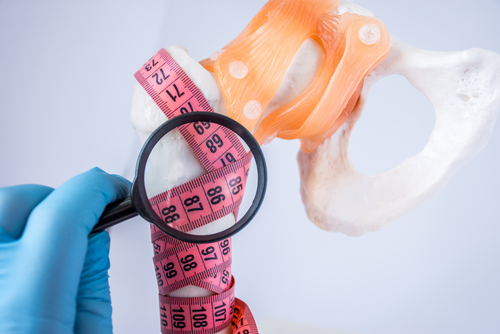RDEB Patients at Higher Risk of Osteoporosis, Fractures, Study Suggests
Written by |

Patients with recessive dystrophic epidermolysis bullosa (RDEB), particularly those with delayed puberty, have a higher risk of osteoporosis — lower bone density — in the lumbar spine than healthy people of the same age, a study shows.
The study, “Retrospective longitudinal study of osteoporosis in adults with recessive dystrophic epidermolysis bullosa,” was published in the journal Clinical Case Reports.
RDEB is a form of epidermolysis bullosa caused by mutations in COL7A1, the gene that provides the instructions for making the collagen VII protein, essential for adhesion between layers of the skin. Defects in this gene result in skin blistering.
Children with this rare condition are at risk of developing osteoporosis, a bone complication characterized by reduced bone mineral density (BMD), which makes them more likely to experience fractures than people of their age.
Several factors may contribute to osteoporosis, including inflammation, low body mass index, and insufficient calcium and vitamin D intake. In children with RDEB, impaired mobility due to blistered feet, knee contractures, and muscle weakness are important predictors for reduced BMD.
Still, there is little knowledge on what happens to bone density during puberty and yearly adulthood, when bone density reaches its peak in the general healthy population.
To shed light on this issue, researchers at Guy’s and St. Thomas’ NHS Foundation Trust reviewed changes in BMD, measured by dual-energy X-ray absorptiometry (DXA) scans, over time in 34 RDEB patients ages 16-35.
Among the participants, 68% had severe generalized RDEB, 20% had generalized intermediate RDEB, and 12% had inversa RDEB. Patients with severe generalized RDEB had the most impaired mobility.
Thirteen patients experienced delayed puberty, but by age 19, 85% of the participants had achieved puberty without requiring hormone therapy.
Five patients, all with severe generalized RDEB, did not attain puberty and had severe osteoporosis of the lumbar spine between the ages of 16 and 20. These patients were also immobile and had a very low height.
Researchers conducted statistical analysis, and found that among patients 21‐25 years old, those who did not attain puberty were significantly more likely to have osteoporosis, compared to those who did.
By the end of the study, 45% of patients had experienced increases in their BMD, 32% had maintained their BMD, and 23% had experienced a reduction in BMD. Improvements were higher for patients who achieved puberty and improved or maintained their mobility.
Still, many of patients with BMD improvements in the severe generalized RDEB group still had a lower-than-normal BMD.
“Patients with severe types of EB are at high risk of osteoporosis of the lumbar spine compared with the non-EB population of the same age and this can result in fracture,” researchers said.
“Even people with inversa RDEB, a more localized form of RDEB in which mobility remains normal, show some risk of osteopenia,” they added.
Most patients (94%) reached the recommended calcium intake. The two patients who did not experienced bone density loss.
Five patients received bisphosphonate therapy to prevent bone loss. Among the four patients with follow-up imaging scans, two experienced improvements in BMD and two maintained their BMD scores.
For patients ages 16-20, reduced body mass index (below 18.5 kg/m2) was found to be associated with an increased risk of osteoporosis, but body mass index improved with age across all RDEB subgroups.
“When puberty is attained, it is possible for adults with RDEB to improve bone density of the lumbar spine,” researchers said. “If this is not achieved, however, optimization of mobility, BMI, and nutrition seem to have little or no effect.”
Patients with RDEB should be regularly evaluated through DXA and standard X-rays to follow changes in bone density and identify potential fractures. This could potentially reduce “fractures and their impact on morbidity and mortality,” researchers suggested.
Additional studies are needed to explore the impact of intervention programs designed to improve bone health, muscle strength, balance, and coordination in epidermolysis bullosa patients.





